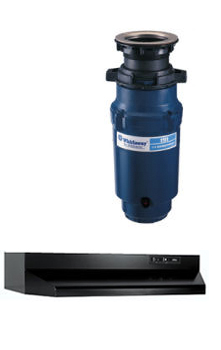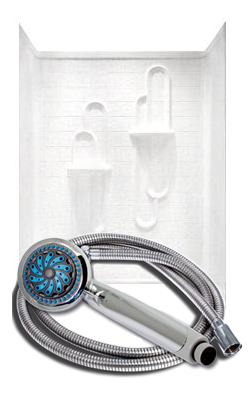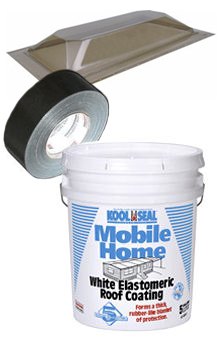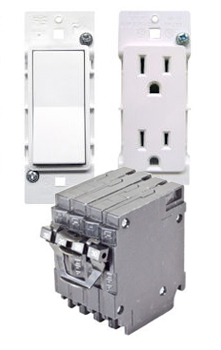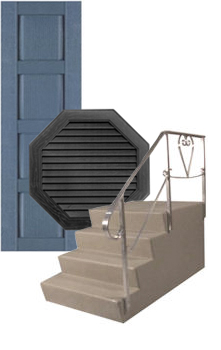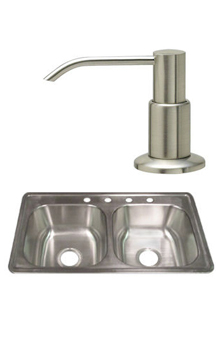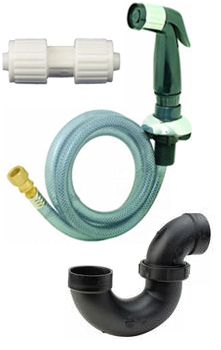
As the temperature drops and heating bills rise, mobile homeowners face the challenge of maintaining a warm, cost-effective living space. However, many homeowners overlook a crucial aspect of their heating systems— the heating ducts.
Making sure your mobile home’s heating ducts are sealed is a fantastic do-it-yourself home improvement task. Not only is it simple and affordable, but it brings big benefits! When your heating ducts are sealed right, you’ll save money on energy, see lower utility bills, and feel way more comfortable at home.
In this guide, we’ll show you the simple steps to seal your mobile home’s heating ducts and explain why it’s so important.
Mobile Home Forced-air Heating Systems
Mobile homes typically rely on forced-air heating systems to distribute warmth throughout the living space. These systems rely on a heat source powered by electricity, natural gas, or propane to warm the air in your home. A strong fan then moves this warm air through a duct system in the floor, sending it to different parts of the house.
While some mobile homes in the South might have ducts in the ceiling, we’re specifically looking at the ones in the floor. Over time, these floor ducts can develop leaks, causing energy to be wasted and leading to higher utility bills.
What are Heating Ducts?
Think of your HVAC system as the circulatory system of your home. Picture the thermostat as the brain, the furnace as the heart, and the ductwork as the blood vessels.
Much like veins and arteries, the ducts are typically made of lightweight, pliable, galvanized sheet metal. This material is lightweight and easy to form, making it perfect for mobile homes. Short pieces of ducts snap together to create a long tunnel that carries air throughout your home.
Like the veins and arteries in our body, there are two types of ducts: return air ducts and supply air ducts. Return air ducts carry untreated air from your home to the furnace for conditioning, while supply air ducts distribute the conditioned air throughout the house.
Over time, these ducts may develop gaps, cracks, or leaks, which can impact the efficiency of your heating system. Without proper ductwork, your HVAC system will struggle to keep you comfortable inside your home.
Do You Need To Seal Heating Ducts in a Mobile Home?
When ducts have leaks or gaps, heated air escapes, forcing the heating system to work harder to keep the temperature just right.
It’s quite common for duct systems with leaks to lose up to 20 percent of their efficiency. So, if your yearly heating and cooling costs are $2,160 and your ducts aren’t airtight, you might be shelling out $432 annually to heat and cool the great outdoors.
By sealing up these ducts, you guarantee that the cozy warmth goes where it’s supposed to, cutting down on wasted energy and, in the end, reducing your utility bills.
Mobile Home Duct Systems Structure
Before you start sealing your heating ducts, it’s crucial to familiarize yourself with the structure of your mobile home duct system. However, mobile homes have a unique advantage in the way their heating and cooling ducts are positioned.
In single wides with joists going lengthwise, the ducts run right down the middle under the floor. For single wides with joists going crosswise, the ducts also run down the middle. Still, they’re usually under the joists, not directly under the floor. Both of these setups help reduce the number of corners the ducts need to go around, which means the warm or cool air can reach all the rooms better.
When it comes to double wides, their ductwork usually runs down the middle on each side, depending on the joists, and connects using a crossover vent.
Crossover Ducts
Double-wide mobile homes have a large crossover duct that transfers heated or cooled air from one side to the other. The crossover vents should not rest on the ground. Instead, they should be well insulated and connected at both ends with a metal or plastic band. Seal the band with metalized tape to prevent air leaks.
These ducts are particularly prone to leaks, and addressing them during sealing is crucial. Pay close attention to any visible gaps or cracks in these areas to ensure the effectiveness of your efforts.
Where to Seal Heating Ducts
When you begin sealing your heating ducts, it’s crucial to focus on specific areas for adequate insulation. Here’s a breakdown:
- Trunk Line: Secure the trunk line by taping the corners to ensure a snug fit.
- Termination Cap: The termination cap marks the end of the ductwork, and its abrupt cutoff can lead to air loss. To address this, tape all edges and provide ample insulation on all three sides.
- Boot: The boot functions as an arm, connecting the main underfloor vent to each floor vent. To effectively seal it, use tape (or mastic) on all edges and angles.
- Crossover Vent: Pay special attention to the crossover vent in double wides. This area forces warm air to make a corner turn. Even the slightest crack can significantly reduce the ability of the warm air to reach its intended destination.
Sealing Heating Ducts in a Mobile Home
Get together a few simple materials to seal the heating ducts in your mobile home. You probably already have most of the things you need, and the items you’ll have to buy is affordable and easy to find at Mobile Home Parts Store.
Some of the materials you’ll need include:
- Water-based Mastic
- Paint Brush (1.5″ or so)
- Scissors
- Foil-faced butyl tape
- Old clothes
- Gloves
Can You Use Duct Tape Instead?
A little duct tape can fix anything, right? While it might seem like a quick fix for sealing ducts, the truth is it won’t stand the test of time.
Sure, when you first apply it with precision, duct tape can seal those pesky leaks. But here’s the catch: duct tape starts to wear out over time, especially when exposed to heat. As your ductwork expands and contracts with temperature changes, the tape stretches and relaxes until it eventually gives in. During this process, the tape and its stickiness dry out, and that airtight seal is lost.
So, what’s the better option? Choose specialized foil tape and mastic that are specifically designed for HVAC systems. They’ll provide a lasting solution without the pitfalls of regular duct tape.
How to Seal Heating Ducts
Now that you’ve gathered your materials let’s dive into the step-by-step process of sealing your mobile home heating ducts:
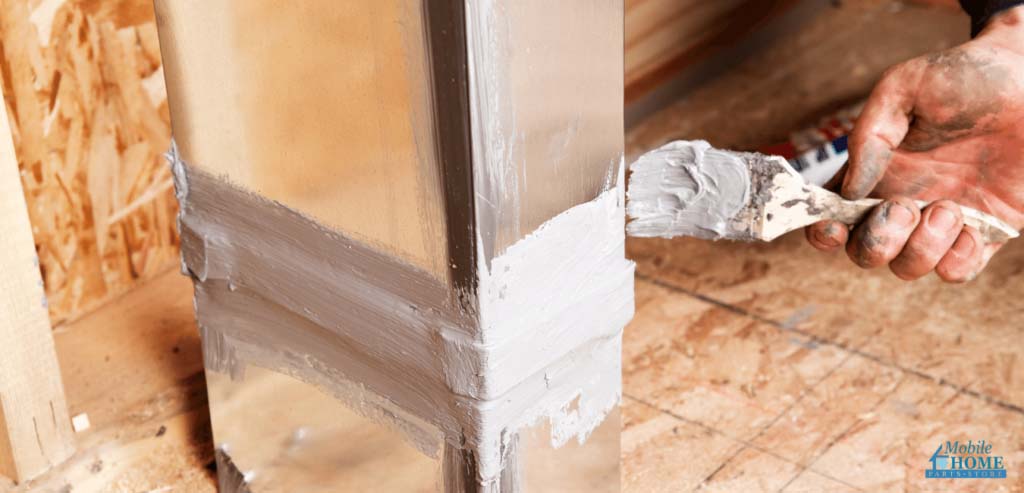
Dealing with the Underbelly
To access the ducts, cut a straight line beneath the duct and secure it back in place using belly wrap tape.
Inspect For Large Holes and Cracks
Check for big dents, cracks, or blockages in the duct. If you find any significant cracks or holes, use tape to cover them, strengthen the duct, and apply mastic over the taped areas.
Clean the Surface
Before applying sealant, ensure the surface of the ducts is clean and free of debris. Wipe down the ducts using a regular household cleaner and rag. The mastic will bond better on clean surfaces.
Apply Mastic
Grab your paintbrush or use your fingers to spread mastic over joints, small cracks, and holes. Be generous with the application – make sure there’s at least a couple of inches of mastic on each side of every joint. Keep in mind that sheet metal can have sharp edges, so it’s essential to wear protective gloves while working.
Sealing the Boot
Focus on sealing the connections between the main truck line and vents or registers, known as boots. It’s important to seal this entire area to prevent cold air from under your home from mixing with the heated air. Strengthen these connections and stop air leaks by using foil tape.
- Look inside the duct and remove any objects that may have fallen in.
- Give the duct a thorough cleaning by scraping and vacuuming it, followed by scrubbing it down with rubbing alcohol and a rag. Cleaning the duct ensures that the sealing materials will stick to the duct when the metal is clean and dry.
- Use approved foil-faced butyl tape to cover all sides of the boot and extend it over the edge of the subfloor. Staple the tape to the subfloor for added security.
- Afterward, use approved mastic to coat all seams and edges of the tape. Allow the mastic to dry before replacing the register cover.
How to Seal Crossover Vent
Sealing crossover vents between the two trunks on a double wide is crucial for preventing heat loss and maintaining an even distribution of warm air. Follow these steps:
- Inspect Crossover Ducts: Identify any gaps or leaks in the crossover ducts. These areas often require additional attention.
- Apply Sealant: Use mastic to seal the two connection points and the duct. Ensure a thorough application for maximum effectiveness.
- Reinforce with Foil Tape: Apply foil tape over the sealed areas to provide additional reinforcement.
Sealing the End of the Ducts
Finally, remember to seal the ends of your ducts. To prevent air from escaping, add fiberglass (or foam) insulation.
You can either use Flex Duct or the following DIY solution:
- Wrap a 12-inch fiberglass batt in a kitchen-sized garbage bag.
- Slide this “poly bag” down the register boot and into the main trunk line, just beyond the boot.
- Create a tight seal with butyl tape and cover the new duct barrier with mastic for added effectiveness.
Closing

Congratulations on taking the initiative to enhance the warmth and efficiency of your mobile home! Sealing your heating ducts might sound like a small task, but the impact on your comfort and energy bills is substantial. As the chilly season sets in and heating costs rise, ensuring the integrity of your ductwork becomes a savvy investment in your home’s coziness and your wallet’s happiness.
By sealing the ducts, you’re not just preventing warm air from escaping but also sending a clear message to those rising utility bills—enough is enough! Imagine the satisfaction of enjoying a toasty home while keeping your hard-earned money where it belongs – in your pocket.
So, as you embark on this simple yet impactful DIY project, remember that every layer of mastic and every piece of foil tape contributes to a cozier, cost-effective living space. Your efforts today will pay off tomorrow and in the many chilly seasons to come. Get ready to bask in the warmth of your well-sealed mobile home, where comfort and savings harmonize seamlessly. Happy sealing!
Tags: heating ducts, mobile home, Mobile Home Parts Store, mobile home repair, Mobile Home winterizing, sealing heating ducts


